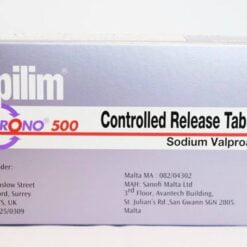
Topalex (25mg tablet x 60)
$59.86
Topalex is a medication available in tablet form, with each tablet containing 25mg of the active ingredient. It is commonly prescribed as an antiepileptic drug to manage and prevent seizures in individuals with epilepsy. The active ingredient in Topalex is topiramate, which works by regulating electrical signals in the brain to reduce the occurrence and severity of seizures. It is important to follow the prescribed dosage and instructions provided by a healthcare professional while taking this medication. Topalex may also be used for other conditions as determined by a healthcare provider.



